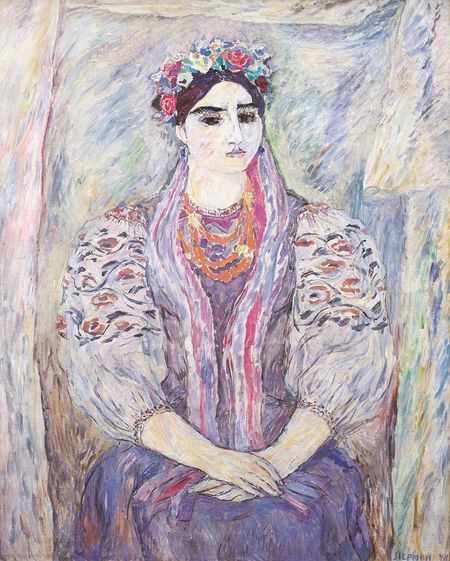“Quiet Protest in the 1970s”: The National
Art Museum of Ukraine has changed its name for a while
The National Art Museum of Ukraine (NAMU) will launch the 1970s artists’ exhibition, the first of its kind since Ukraine’s independence, on September 20. Over 120 works will be shown to the public, many of them displayed for the first time. To better reflect the spirit of the age and draw additional attention to the exhibition, the museum has reverted to its name from 40 years ago. Replacement of the sign on the museum’s front has become the first step of the renaming effort, so that citizens and guests of Kyiv would be able to visit the State Museum of Ukrainian Fine Arts for 10 days, the organizers told The Day.
“It is a bold experiment on the museum’s part, showing its management’s desire to transform the institution into an up-to-date platform for cultural exchanges,” the curator of the “Quiet Protest in the 1970s” project Yevhen Bereznytsky remarked. Let us recall that the NAMU did not change its name since the establishment of an independent Ukrainian state and until now. Before, name changes reflected the nation’s complicated historical fate and phases of museum development in Ukraine. Thus, the institution was founded as the Kyiv City Museum of Antiquity and Arts in 1899, changed its name to the Emperor Nicholas II Kyiv Industrial and Fine Arts and Sciences Museum in 1904, was renamed as the 1st State Museum when nationalized in 1919, and went on to be known as the Shevchenko All-Ukrainian History Museum since 1924, the State Ukrainian Museum since 1936, and the State Museum of Ukrainian Art since 1939. German occupiers of Kyiv merged the museum with a collection of Russian art in 1942, naming the integrated institution the State Museum of East European Art. “The temporary reversion to the old name is an attempt to introduce modern audience to the context of the 1970s, remind them of the artistic events of that decade.
The 1970s were a time of great change for the museum. It reopened after a reconstruction in 1972, presenting a new, expanded exposition. The decade saw a lively international activity, too, allowing the Kyiv public to see such exhibitions as the Treasures of Tutankhamun’s Tomb, West European Art from the Collection of Armand Hammer, Gold Artifacts of Pre-Columbian America. We could not find enough place in our rooms to let everyone in, and long lines formed at the museum,” Yulia Vahanova, deputy director of the NAMU for exhibitions and international relations, told us. “Quiet Protest in the 1970s” will show the best paintings and drawings, including landscapes, portraits, and scene compositions by over 20 artists, such as a consistent follower of “severe” style Vladyslav Mamsikov, a master of lyrical paintings Zoia Lerman, a nonconformist from Odesa Oleh Sokolov, the founder of the “panic realism” school Petro Belenok, and a maestro of still life genre Valentyn Reunov. The exhibition will run until October 20.






